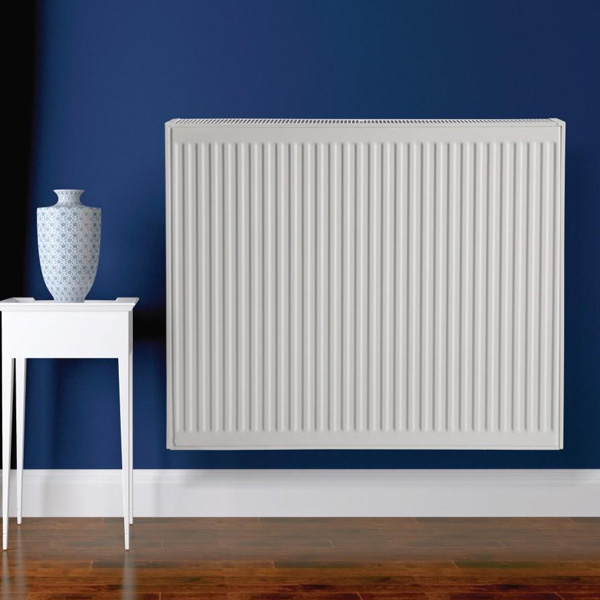In addition to having a strong heat dissipation function, the radiator placed in the home is best integrated into the overall home decoration to create a personalized and fashionable decoration style, reflecting the owner's refined taste. Steel radiators are one of the most popular types of radiators nowadays. They have a good appearance, excellent heat dissipation performance, and are environmentally friendly. Therefore, many consumers like to use them. Now, follow the editor of Elma Steel Plate Radiator to take a look at why steel radiators are popular
The reasons why steel radiators are popular:
1. Strong pressure resistance: The pressure-bearing capacity of steel radiators has been raised from the industry standard of 1.0mpa to the enterprise standard of 1.2mpa, an increase of 20%. They can withstand high pressure and do not deform
2. Easy installation and maintenance: Steel radiators are made by seamless welding, so there is no need to weld each piece during installation, making installation and maintenance very convenient
3. Moderate cost: It is widely used both at home and abroad. The material used for steel radiators is cold-rolled low-carbon steel pipe. Currently, the price of steel pipes sold on the market is very low
4. Efficient heating: Large water flow, low water resistance, and low energy consumption of the system. It adopts convection heat dissipation method, and the temperature rises quickly.
5. Strong comfort: Steel itself has the characteristic of large molecules, which is suitable for the penetration of water molecules, and there will be no obvious dryness when in use.
6. Easy to clean: The surface is smooth, not prone to scaling, and will not form dust dead corners
7. Strong decorative effect: Uniform spraying, bright colors, long-lasting and never fading, and a wide variety of styles to choose from.
8. Environmental protection and health: It heats up rapidly, is low-carbon and energy-saving, green and environmentally friendly, does no harm to human health, and does not produce unpleasant odors at high temperatures
9. High cost performance: It has excellent performance, but its price is very low, making it affordable for ordinary families
10. Strong adaptability: It has a wide range of applications both at home and abroad, and is generally suitable for closed heating systems that use hot water as the heat medium.

So, how to choose steel radiators? Come and take a look at the detailed selection guide
1. Selection of steel radiators The heat dissipation area F of a radiator refers to the total surface area of the radiator's heat dissipation elements that come into contact with the indoor air. The higher the ribbed system of the radiator, the greater its F value. The F value of the string radiator is the largest among all types of products. However, please note that since the heat dissipation capacity Q of the radiator =K.F.△T, when △T is constant, The product of k and F must be large for the value of Q to be large. That is, simply increasing f does not necessarily increase the value of Q
2. Selection of steel radiators: The heat transfer coefficient of radiators. The heat transfer coefficient k of radiators refers to the amount of heat transferred per square meter of heat dissipation area per unit time when the average temperature of the heat medium inside the radiator differs from the indoor temperature by 1 degree. The product of this value and the area of the radiator, then multiplied by the standard heat transfer temperature, gives the standard heat dissipation of the radiator. That is, Q=K.F.64.5. Under the condition that the heat dissipation area is constant, the larger the K value, the greater the heat dissipation of the radiator. The K value represents the comprehensive coefficient of the entire heat transfer process, which is related to the characteristics and usage conditions of the radiator itself, such as the flow of water, etc.
3. Selection of steel radiators: metal strength, metal strength q refers to the value of q per kilogram of metal per unit time when the average temperature of the heat medium in the metal radiator differs from the indoor air temperature by 1 degree Celsius. The larger the Q value, the less metal is consumed to dissipate the same amount of heat. This indicator can be used as a measure of the energy efficiency and economy of radiators made of the same material. For radiators of various materials, they should be evaluated respectively based on the metal thermal strength of their own materials
This article is from:https://www.3171688.com/com/aemnqp/news/itemid-30471.html